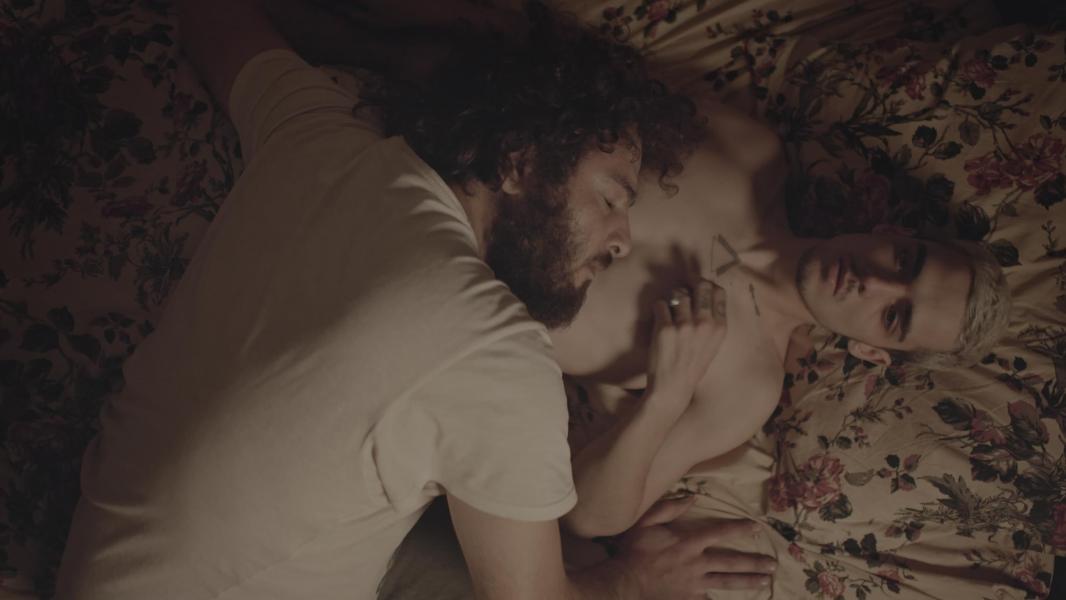
english below
Tijdens het lang aangehouden openingsshot van CRITICAL ZONE volgt de camera een ambulance door een sinister uitziende tunnel. De soundtrack voorspelt ook onheil, hoewel een ambulance redding moet brengen. De nacht blijft een gevoel van dreiging aanhouden terwijl we door een slapeloos Teheran rijden met de empathische drugsdealer Amir, in de Iraanse filmtraditie van Abbas Kiarostami en Jafar Panahi. Onderweg biedt Amir niet alleen drugs aan mensen aan. Hij luistert naar hen, troost degene die het nodig hebben. Maar zijn blik liegt niet: hij is woedend. Wanhoop en woede weerklinken in het verlangen naar plezier en roes van zijn klanten en passagiers. Het gekreun van een vrouw op de achterbank eindigt in ijzingwekkend en ononderbroken geschreeuw.
“Deze film is een 99 minuten durende schreeuw in naam van rebellie en vrijheid”, zei de jury van het Locarno Film Festival over deze moedige allegorie. De jury prees onder andere de gedurfde vertolkingen, het buitengewone sound design en de soms ingetogen dan weer inventieve fotografie, inclusief een ongebruikelijk camerastandpunt dat de wereld op zijn kop zet. Een lot dat Amir en alle andere onderdrukte inwoners van Iran, waaronder regisseur, scenarioschrijver en producent Ali Ahmadzadeh, delen. De Iraanse regering heeft de in Teheran geboren filmmaker officieel verboden het land te verlaten of er films te maken.
“Een nacht in de onderwereld van Teheran, op pad met drugsdealer Amir.”
★★★★ Alex Mazereeuw, De Volkskrant
Met gelijkgestemden onder de crew en niet-professionele acteurs werd CRITICAL ZONE in het geheim opgenomen in de straten van de hoofdstad. Ahmadzadeh's nieuwste regime-kritische speelfilm haalde de Locarno competitie, ondanks verwoede pogingen van Iraanse politici om de film te voorkomen.
In de internationale titel verwijst 'critical' zowel naar de kritische aard van de film als naar de kritische staat van Iran. Hoewel de vrouwelijke GPS-stem waarschuwt voor dreigend gevaar, dringt meer dan één hallucinante realiteit Amirs auto binnen. Is er licht aan het einde van de tunnel?
ENG
The film is in Farsi with English subtitles
During the long-held opening shot of CRITICAL ZONE, the camera follows an ambulance through a sinister-looking tunnel. The soundtrack predicts doom, while the ambulance should bring salvation. During the night, a threatening feeling maintains while we drive through a sleepless Teheran with the empathic drug dealer Amir, in the Iranian film tradition of Abbas Kiarostami and Jafar Panahi. On the road, Amir not only offers drugs to people. He listens to them, and gives comfort to the ones who need it. But his look does not lie: he is furious. Despair and anger resonate in the desire for fun and buzz from his customers and passengers. The moaning of a woman in the back seat ends in a chilling and uninterrupted scream.
"This film is a 99-minute scream in the name of rebellion and freedom", the jury of the Locarno Film Festival said about this brave allegory. The jury praised the bold performances, the exceptional sound design and the sometimes restrained, sometimes inventive photography, including an unusual camera angle that puts the world upside down. A fate that Amir and all other oppressed inhabitants of Iran, including director, screenwriter and producer Ali Ahmadzadeh, share. The Iranian government has officially forbidden the Teheran-born filmmaker from leaving the country or making films there.
With like-minded amongst the crew and non-professional actors, CRITICAL ZONE was recorded in secret in the capital's streets. Ahmadzadeh's newest regime-critical feature film was part of the Locarno competition, despite frantic attempts by Iranian politicians to prevent the film.
In the international title, 'critical' refers to the critical nature of the film, but also to the critical state of Iran. Although the female GPS voice warns for pending danger, more than one hallucinatory reality threatens to enter Amir's car. Is there a light at the end of the tunnel?



